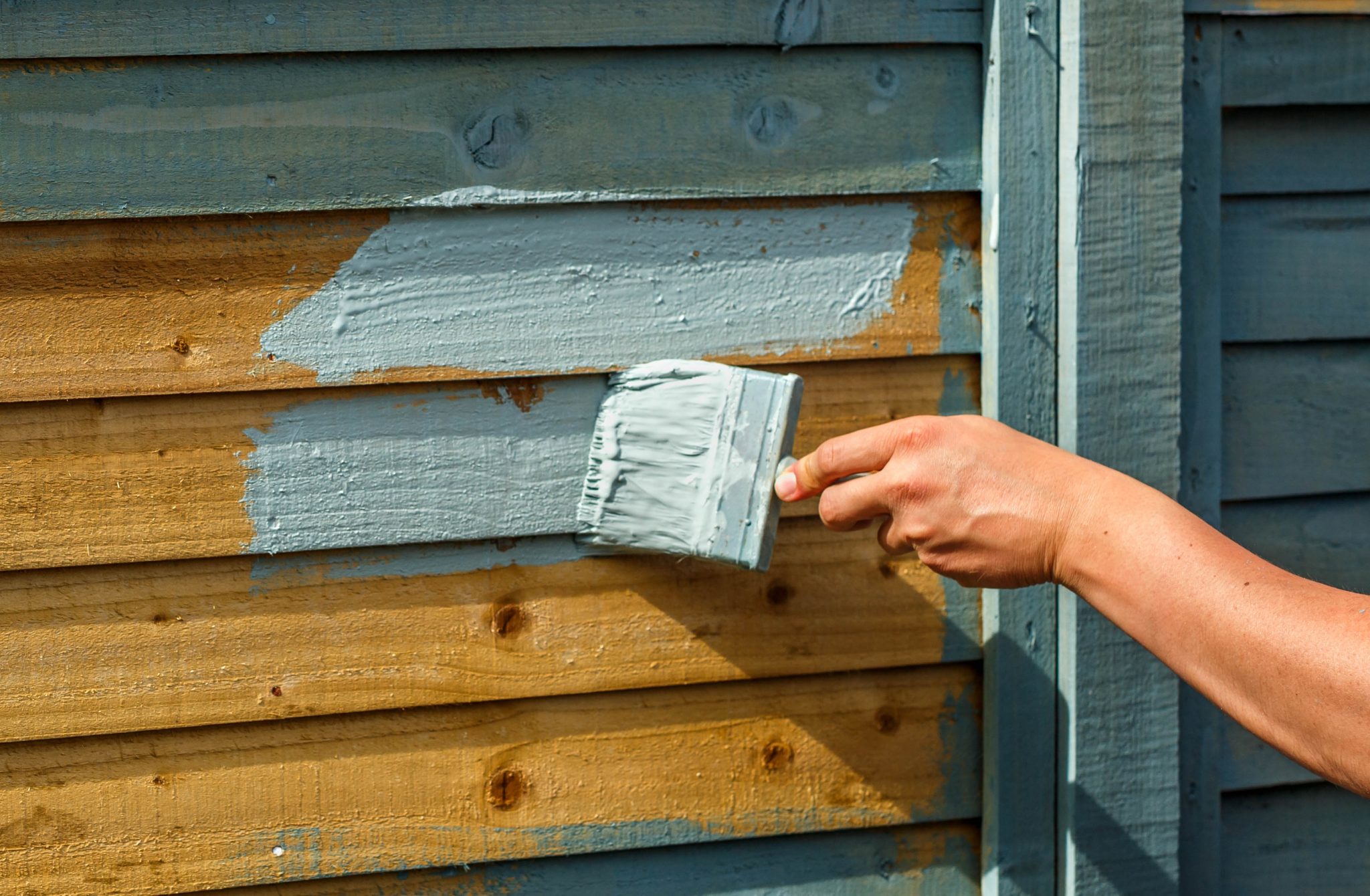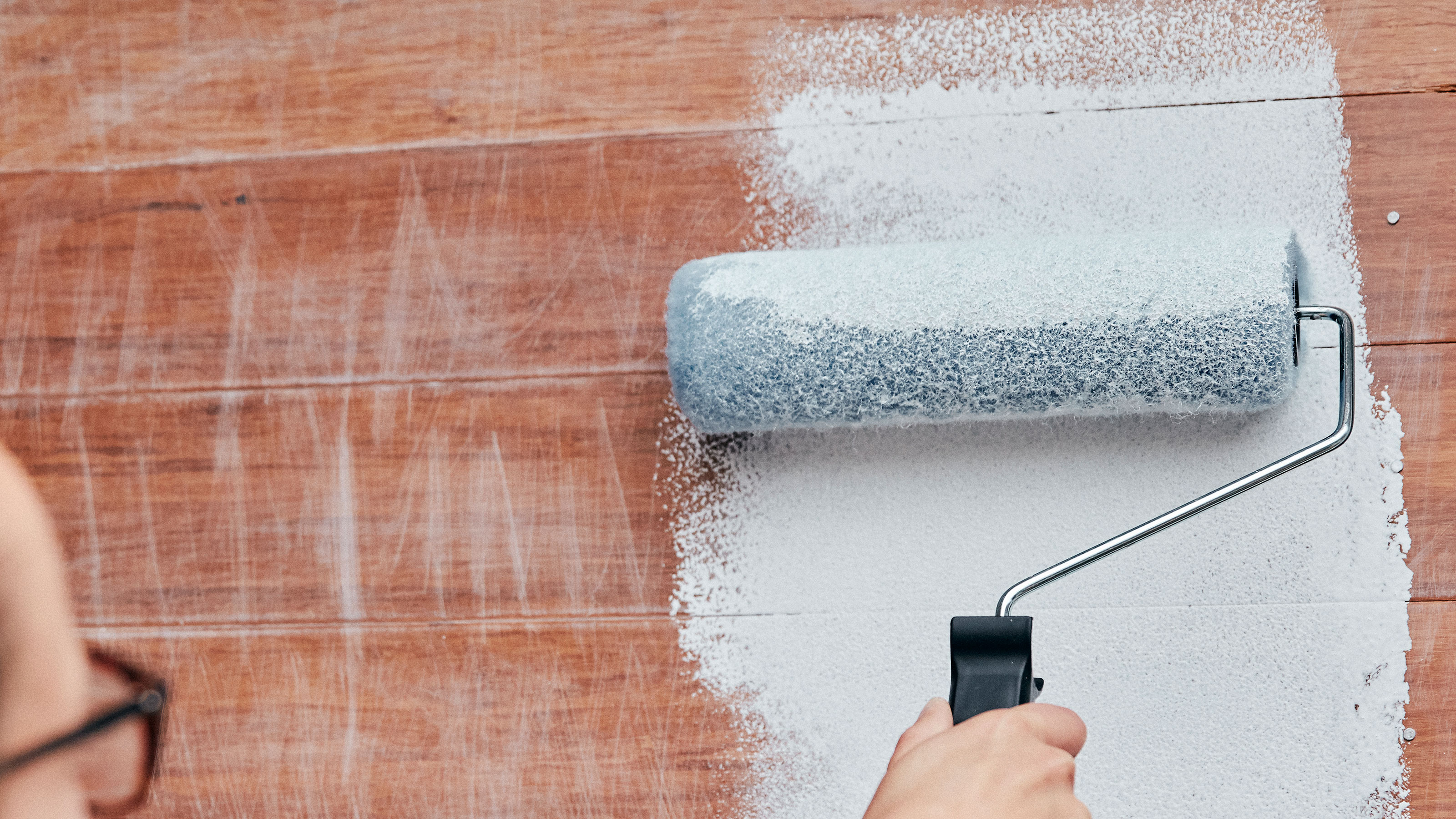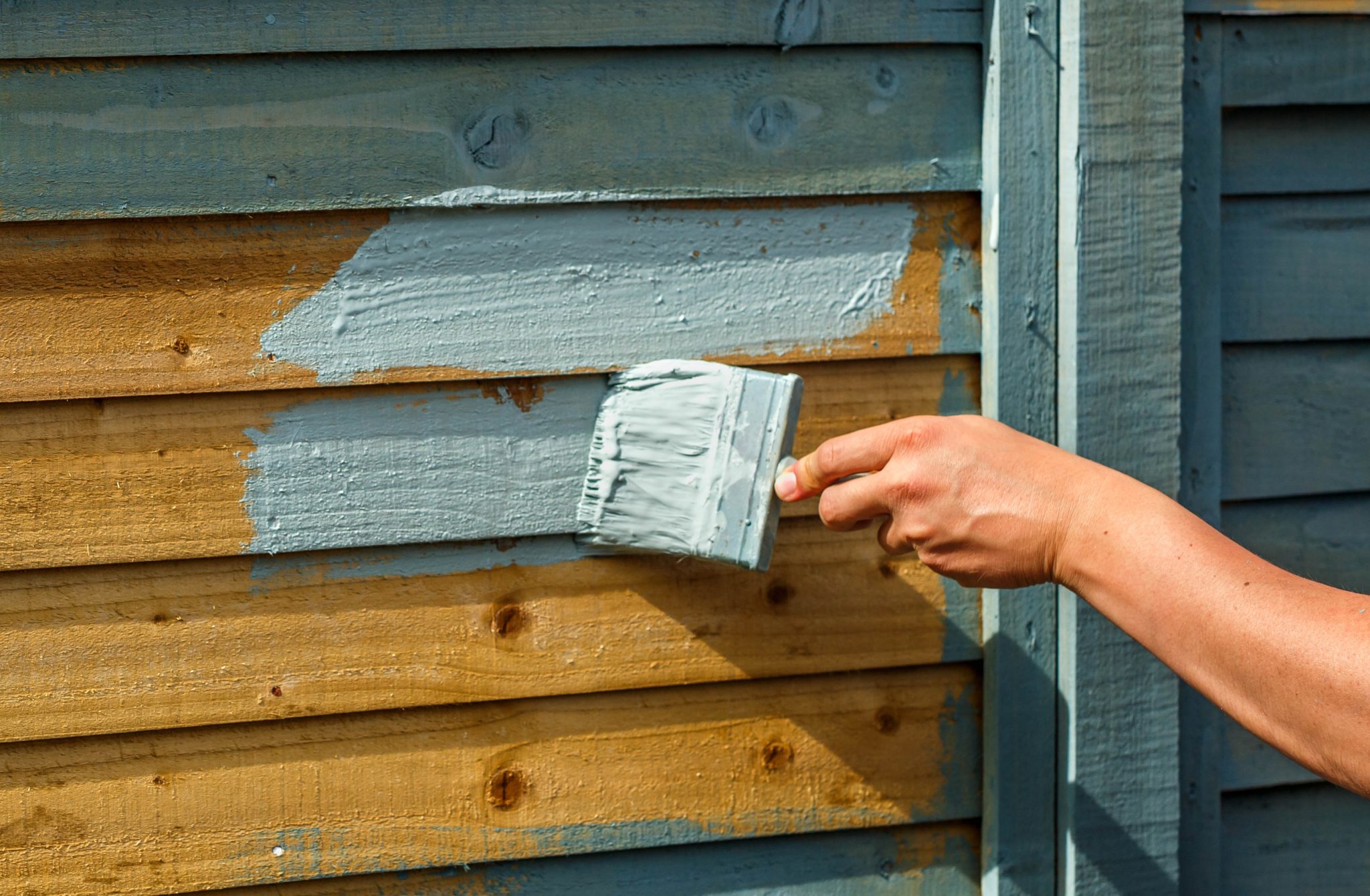Can you use masonry paint on woodwork? Well, let’s dive into this curious question and explore the possibilities together! You see, when it comes to painting wood, there are different types of paints out there, and each has its own purpose and characteristics. So, can you use masonry paint, specifically designed for brick and concrete surfaces, on wood? Let’s find out!
Now, you might be wondering why someone would even consider using masonry paint on wood. It could be that you have leftover masonry paint lying around, or maybe you’re looking for a unique texture or finish for your woodwork. Whatever the reason, it’s essential to understand if it’s a suitable choice for your project. So, let’s uncover the truth behind using masonry paint on wood!
Before we reveal the answer, it’s important to note that masonry paint is primarily designed for porous surfaces like brick, concrete, and stucco. Applying it to wood might not give you the desired results. However, there are certain circumstances where it could work. Intrigued? Great! Let’s take a closer look at the factors you need to consider when using masonry paint on woodwork.
Using masonry paint on woodwork is not recommended. Masonry paint is specifically designed for porous surfaces like masonry and concrete, and it may not adhere properly to wood. Instead, opt for a paint specifically formulated for wood, such as acrylic or oil-based paint. These types of paint will provide better adhesion and durability on wood surfaces.

Can You Use Masonry Paint on Woodwork? Exploring the Possibilities
When it comes to giving your woodwork a fresh new look, it’s important to choose the right paint for the job. One question that often arises is whether or not masonry paint can be used on woodwork. In this article, we will delve into the world of masonry paint and its suitability for wood surfaces. From the benefits and drawbacks to expert tips and alternative options, we will provide you with all the information you need to make an informed decision.
Understanding Masonry Paint
Masonry paint is specifically designed for use on exterior brick, stone, and concrete surfaces. It is formulated to provide durability, weather resistance, and long-lasting color. One of the key properties of masonry paint is its ability to create a breathable and waterproof barrier, allowing moisture to escape while preventing water penetration. This makes it an ideal choice for protecting and enhancing the appearance of exterior masonry. However, when it comes to woodwork, there are a few factors to consider.
While masonry paint may seem like a viable option for wood surfaces due to its durability and weather resistance, it is not recommended for use on woodwork. The main reason for this is that masonry paint typically contains high levels of binders and resins, which help it adhere to porous surfaces like brick and concrete. These components can prevent proper adhesion and absorption when applied to wood, leading to subpar results and potential issues such as peeling and cracking.
In addition, masonry paint is often thicker and more viscous than traditional wood paint, which can make it difficult to achieve a smooth and even finish on wood surfaces. The texture and composition of masonry paint may also affect its aesthetic appeal on woodwork, with potential texture variations and uneven color distribution.
The Drawbacks of Using Masonry Paint on Woodwork
While it may be tempting to use what you already have on hand, there are several drawbacks to consider when using masonry paint on woodwork. Firstly, as mentioned earlier, masonry paint may not adhere properly to wood surfaces, leading to poor durability and an increased risk of paint failure. This can result in the need for frequent repainting and maintenance, which can be time-consuming and costly in the long run.
Another drawback is the visual and tactile differences between masonry paint and traditional wood paint. Wood has its own natural grain and texture, which can be enhanced or complemented by the right paint. Applying masonry paint to wood can mask these natural characteristics, resulting in a less visually appealing finish. Furthermore, the textural differences between masonry paint and wood can create an uneven surface, affecting the smoothness and overall feel of the woodwork.
Lastly, it is worth noting that masonry paint is typically more expensive compared to regular wood paint. Investing in paint specifically formulated for wood surfaces will not only ensure better adhesion and longevity but also provide a more cost-effective solution in the long term.
Alternative Options for Painting Woodwork
If you have woodwork that needs a fresh coat of paint, it is best to use paint specifically formulated for wood surfaces. Here are a few alternative options to consider:
- Wood Paint: This is the most suitable option for wooden surfaces. Wood paint is designed to adhere to wood, providing excellent adhesion, flexibility, and coverage. It comes in a variety of finishes, such as matte, satin, and gloss, allowing you to achieve the desired aesthetic.
- Outdoor Paint: If you are painting woodwork that is exposed to the elements, consider using outdoor paint. It is designed to withstand weather conditions and provide long-lasting protection against UV rays, moisture, and temperature fluctuations.
- Primer and Paint Combo: For optimal adhesion and durability, consider using a combination of primer and paint specifically designed for wood surfaces. The primer acts as a bonding agent, creating a smooth surface for the paint to adhere to and improving its longevity.
By opting for these alternatives, you can ensure the best results for your woodwork while preserving its natural beauty and texture. Remember to choose the right type of paint for the specific wood surface and follow the manufacturer’s instructions for application and drying times.
Key Considerations When Painting Woodwork
Before embarking on your woodwork painting project, there are a few key considerations to keep in mind. By following these tips, you can achieve a professional and long-lasting finish:
Clean and Prepare the Surface
Before painting, ensure that the wood surface is clean and free from dirt, dust, grease, and loose particles. Sand down any rough areas and fill in any cracks or holes with wood filler. Use a primer if necessary to create a smooth base for the paint.
Choose the Right Paint Type
As mentioned earlier, it is crucial to select the right type of paint for wood surfaces. Consider factors such as the location (indoors or outdoors), the level of durability required, and the desired aesthetic finish. Opt for a high-quality paint that is specifically formulated for wood to ensure optimal results.
Use Appropriate Tools and Techniques
Invest in good-quality paint brushes or rollers designed for the type of paint you are using. Consider the size of the woodwork and choose the appropriate tool for the job. Apply the paint evenly and smoothly, following the grain of the wood, for a professional-looking finish.
Allow Adequate Drying Time
Patience is key when it comes to painting woodwork. Allow each coat of paint to dry fully before applying the next one. Follow the manufacturer’s instructions for drying times, and avoid subjecting newly painted surfaces to excessive heat or moisture.
Maintain and Protect
Proper maintenance and protection are essential for preserving the beauty and longevity of painted woodwork. Clean the surfaces regularly with a mild detergent and avoid using harsh chemicals or abrasive materials. Consider applying a topcoat or sealer for added protection against wear and tear.
Consider Professional Help
If you are unsure about tackling a paint job on your woodwork, or if you have intricate or large-scale projects, it may be worth considering hiring a professional painter. They have the expertise and experience to ensure a flawless and long-lasting finish, saving you time and effort.
By following these considerations and using the right paint for your woodwork, you can transform your space and enhance the beauty and longevity of your wooden surfaces. Whether you’re freshening up your indoor trim or revitalizing your outdoor deck, the right paint choice will make all the difference.
Key Takeaways: Can You Use Masonry Paint on Woodwork?
- No, masonry paint is specifically designed for use on masonry surfaces like concrete or brick, not wood.
- Using masonry paint on woodwork can lead to poor adhesion, peeling, and overall unsatisfactory results.
- If you want to paint woodwork, it’s best to use a paint specifically formulated for wood surfaces.
- Wood paint offers better durability, flexibility, and protection against weather and moisture.
- Always follow the manufacturer’s instructions and choose the right paint for the intended surface for the best results.
Frequently Asked Questions
Thinking about using masonry paint on your woodwork? Here are some common questions and answers that will help you make an informed decision:
1. Can I apply masonry paint on wood surfaces?
No, masonry paint is specifically designed for use on porous surfaces like brick, stone, and concrete. Using it on wood is not recommended as it may not adhere properly and could lead to issues such as peeling, cracking, or uneven coverage. For wood surfaces, it’s best to choose a paint that is specifically formulated for wood.
Applying the wrong type of paint can negatively impact the durability and longevity of your woodwork, so it’s important to use the correct product for the intended surface to ensure a professional-looking finish.
2. What are the risks of using masonry paint on wood?
Using masonry paint on wood can lead to several problems. Since masonry paint is designed to adhere to porous surfaces, it may not bond securely to the smooth surface of wood. This can result in poor adhesion, which can cause the paint to peel, crack, or flake off over time. Additionally, masonry paint is not flexible like wood paint, so it may not expand or contract with changes in temperature and humidity, leading to further issues.
If you’re looking to paint your woodwork, it’s crucial to choose a paint specifically formulated for wood to ensure long-lasting results and avoid potential problems down the line.
3. What type of paint should I use for wood surfaces?
For wood surfaces, it is best to use paint that is specifically formulated for wood. There are various types of wood paints available, such as latex, oil-based, or acrylic paint. Each type has its advantages and considerations, so it’s important to choose the one that suits your project and preferences best.
Wood paint is designed to adhere to wood surfaces, providing better adhesion, flexibility, and durability. It is formulated to withstand the natural expansion and contraction of wood due to temperature and humidity changes, ensuring the paint remains intact and lasts longer.
4. Can I apply masonry paint as a primer on wood before using wood paint?
While masonry paint can sometimes be used as a primer on certain surfaces, it is not recommended to use it as a primer for wood before applying wood paint. Primers specifically formulated for wood provide better adhesion, promote durability, and offer the right base for the wood paint to adhere to.
Using a wood primer before applying wood paint is essential to ensure proper adhesion, a smooth finish, and enhanced durability. It helps seal the wood’s surface, prevents bleeding of tannins (natural wood compounds), and enhances the paint’s coverage, resulting in a professional-looking finish.
5. What should I do if I’ve already applied masonry paint on wood?
If you’ve already applied masonry paint on wood and are experiencing issues such as peeling or cracking, it’s best to remove the paint and start fresh with the correct type of paint for wood surfaces. Remove the existing paint using appropriate methods like scraping, sanding, or using a chemical paint stripper, depending on the extent of the paint and surface damage.
Once the old paint is removed, prepare the wood surface by sanding it to create a smooth and clean base for the new paint. Then, apply a primer specifically formulated for wood and follow it with a high-quality wood paint to achieve a long-lasting and visually appealing finish.

Summary
So, can you use masonry paint on woodwork? The answer is no. Masonry paint is specifically designed for use on surfaces like concrete or brick, not wood.
Using masonry paint on woodwork can lead to poor adhesion, peeling, and cracking. It’s important to choose the right type of paint for each surface to ensure a long-lasting and beautiful finish.
When painting woodwork, opt for a paint specifically formulated for wood surfaces, such as wood primer and wood paint. This will provide better coverage, durability, and a smoother finish. Remember to always read the label and follow the manufacturer’s instructions for the best results.
